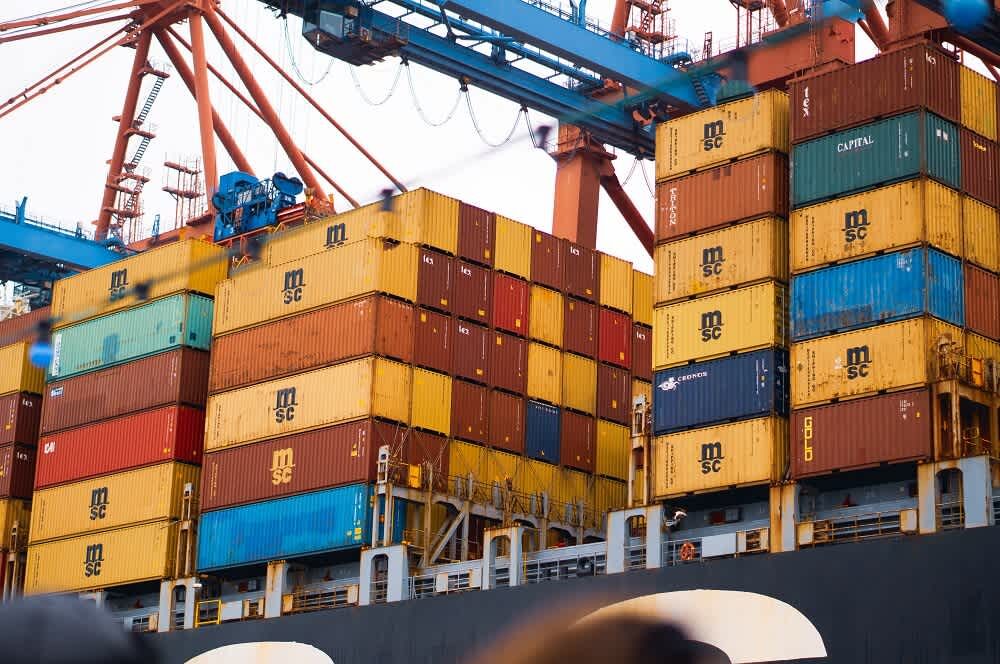For businesses and individuals alike, the allure of China’s vast manufacturing potential is undeniable. However, navigating the logistics of getting your goods from China to Oman can feel like deciphering an ancient trade route map. Fear not, intrepid importer! This comprehensive guide will equip you with the knowledge to conquer the modern Silk Road with confidence.
Understanding the Logistics of Shipping from China to Oman

The journey from Chinese factory to Omani doorstep involves a complex dance of transportation modes, paperwork, and regulations. Here’s a breakdown of the key players:
- Export Agent: Located in China, this company handles the movement of your goods from the origin factory to the port of departure. They can also assist with customs clearance in China.
- Freight Forwarder: This intermediary acts as a single point of contact, managing all aspects of your shipment, from booking transportation to customs documentation.
- Shipping Lines: Ocean carriers that transport your cargo by sea in containers.
- Airlines: If opting for air freight, these companies will transport your goods by plane.
- Omani Customs: Responsible for ensuring your shipment complies with import regulations and collecting any applicable duties or taxes.
Types of Shipping Methods Available
The two primary methods for shipping from China to Oman are:
- Sea Freight: The most cost-effective option, ideal for large shipments or non-perishable goods. Transit times typically range from 30 to 45 days. Ocean freight can be further divided into:
- Full Container Load (FCL): You rent an entire container for your exclusive use.
- Less Than Container Load (LCL): Your goods share a container with other shipments, offering a more budget-friendly option for smaller quantities.
- Air Freight: The fastest but most expensive method, suitable for urgent deliveries or perishables. Transit times can be as short as 3-5 days.
Choosing the Right Shipping Company:
A reliable shipping company is paramount for a smooth experience. Here are some factors to consider:
- Experience: Opt for a company with a proven track record of handling China-Oman shipments.
- Service Offerings: Ensure they provide the services you need, such as customs clearance assistance or door-to-door delivery.
- Pricing Transparency: Get quotes from several companies and compare their pricing structures. Don’t just focus on the headline figure; consider hidden costs like fuel surcharges or terminal fees.
- Communication: Choose a company with clear communication channels and responsive customer support.
Documentation and Customs Requirements

To ensure your shipment clears Omani customs without delays, obtain the necessary documentation:
- Commercial Invoice: A detailed breakdown of the goods being shipped, including their value, quantity, and description.
- Packing List: An itemized list of the contents in your shipment.
- Bill of Lading (Sea Freight) or Air Waybill (Air Freight): Documents issued by the shipping company serving as a contract of carriage.
- Certificate of Origin: Proof that the goods originated in China.
Omani customs regulations can vary depending on the type and value of your goods. It’s crucial to research any specific import licenses or permits you may require. Consider consulting a customs broker to navigate these complexities.
Shipping Costs and Pricing Factors
The cost of shipping from China to Oman depends on several factors:
- Shipping method: Sea freight is generally cheaper than air freight.
- Weight and volume of your shipment: Heavier and bulkier goods will incur higher charges.
- Origin and destination ports: Costs can vary depending on the specific ports used.
- Fuel surcharges: These can fluctuate based on global prices.
- Insurance: Optional but recommended to protect your goods against damage or loss during transit.
- Value-added services: Additional charges may apply for services like customs clearance assistance or door-to-door delivery.
Obtaining a Quote:
The best way to estimate your shipping costs is to request quotes from multiple shipping companies. Be prepared to provide details regarding your shipment’s weight, dimensions, origin and destination points, and desired transit time.
Shipping Timeframes and Transit Options

The time it takes for your shipment to reach Oman depends on the chosen shipping method:
- Sea Freight: Transit times can range from 30 to 45 days, depending on the route and port congestion.
- Air Freight: Air shipments typically arrive within 3-5 days, offering the fastest option.
Expedited Services:
Some companies offer expedited sea freight options that can reduce transit times by a few days. While not as fast as air freight, these can be a cost-effective compromise for time-sensitive shipments.
Tracking Your Shipment
Peace of mind comes with knowing your shipment’s whereabouts. Most reputable shipping companies provide online tracking tools that allow you to monitor your shipment’s progress in real-time. This information typically includes:
- Current location of your container (sea freight) or shipment (air freight)
- Estimated arrival date at the destination port
- Clearance status at customs
Additionally, you can receive notifications via email or SMS for key milestones in the journey, such as departure from the origin port and arrival at the destination port.
Proactive Communication:
Maintain clear communication with your chosen shipping company. Don’t hesitate to reach out if you have any questions or concerns about your shipment’s status.
Dealing with Customs Clearance

Customs clearance can sometimes cause delays. Here are some tips to streamline the process:
- Accurate Documentation: Ensure all your paperwork is complete, accurate, and up-to-date. Inconsistencies can lead to delays and additional scrutiny.
- Classification: Properly classify your goods according to the Omani Harmonized System (HS) code. This code determines the applicable duty rates. You can find the HS code for your goods on the Omani customs website.
- Value Declaration: Declare the correct value of your goods on the commercial invoice. Undervaluing can raise red flags with customs authorities.
- Restricted or Prohibited Goods: Familiarize yourself with any restrictions or prohibitions on importing specific goods into Oman. Violating these regulations can result in confiscation of your shipment and hefty fines.
Seeking Help:
If you encounter any difficulties during customs clearance, consider seeking assistance from a customs broker. These professionals possess the expertise to navigate customs regulations and expedite the process.
Tips for Successful Shipping from China to Oman

By following these tips, you can ensure a smooth and successful shipping experience:
- Plan Ahead: Research different shipping options and obtain quotes well in advance, especially if you’re dealing with time-sensitive shipments.
- Consolidate Shipments: Consider consolidating smaller shipments into one larger one to benefit from economies of scale and potentially lower costs.
- Negotiate Rates: Don’t be afraid to negotiate shipping rates with different companies.
- Packaging Matters: Ensure your goods are packaged securely using high-quality materials to withstand the rigors of international transport.
- Insurance: While not mandatory, consider obtaining cargo insurance to protect your investment against potential loss or damage during transit.
- Stay Informed: Keep yourself updated on any changes in shipping regulations or customs procedures that might impact your shipments.
By following this comprehensive guide and remaining vigilant throughout the process, you can successfully navigate the logistics of shipping from China to Oman. Remember, with careful planning, clear communication, and a reliable shipping partner, you can conquer the modern Silk Road and ensure your goods reach their Omani destination efficiently and cost-effectively.





